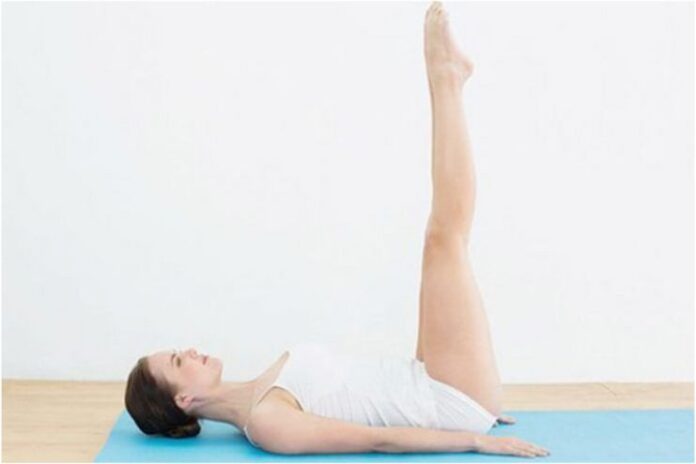Affiliate Disclaimer
Some links in this article are affiliate links. We may earn a small commission if you make a purchase through these links, at no extra cost to you. We only recommend products we find useful to our readersHemoglobin, found in red blood cells, is essential for transporting oxygen from the lungs to other parts of the body. It also contains iron, which, according to experts (R), plays an important role in the body’s development.
Symptoms of hemoglobin deficiency include dizziness, fatigue, headache, and tiredness. Sometimes, a lack of hemoglobin also causes a lack of concentration.
To counter this, it is essential to maintain high hemoglobin levels in the body.
Yoga, an ancient health practice, can help with this. Experts say that regularly practicing yoga helps increase the production of RBCs (red blood cells) in the body.
Yoga boosts hemoglobin production through breathing exercises and asanas. To explain this further, we have made a list of important yoga techniques that can boost hemoglobin production.
Also Read: 6 Best Yoga Asanas For Neck Pain
Yoga Asanas to Boost Hemoglobin
1. Shoulder Stand or Sarvangasana
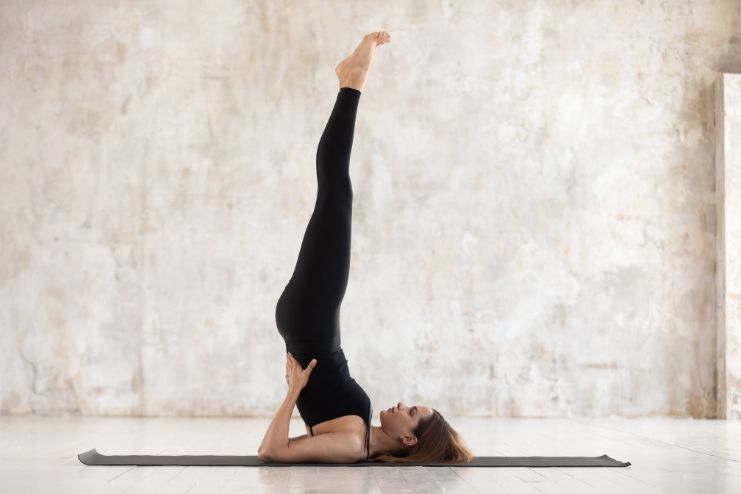
Sarvangasana, also known as the shoulder stand, is an excellent yoga asana for hemoglobin production.
Steps:
- Lie down on your back on the floor, keeping your hands and elbows close to your body
- Exhale and lift your hips up while trying to bend your knees
- Lift your legs in the air and straighten them upwards. Ensure that you are inhaling during this step
- Support your back with your hands and keep your elbows close to your body for more stability. Hold the position for a few minutes
- If a full should stand isn’t possible, do as much as you can, but ensure the position is stable
- While exhaling, bring your legs toward your chest
- Lower your hips down while inhaling
- And gently return to the original position
Cautions:
- Pregnant and menstruating women should avoid this asana
- Consult your doctor if you have heart problems, a slipped disk, spondylosis, acute thyroid issues, neck pain, or high blood pressure before performing this asana
2. Legs-Up-the-Wall Pose or Viparita Karani
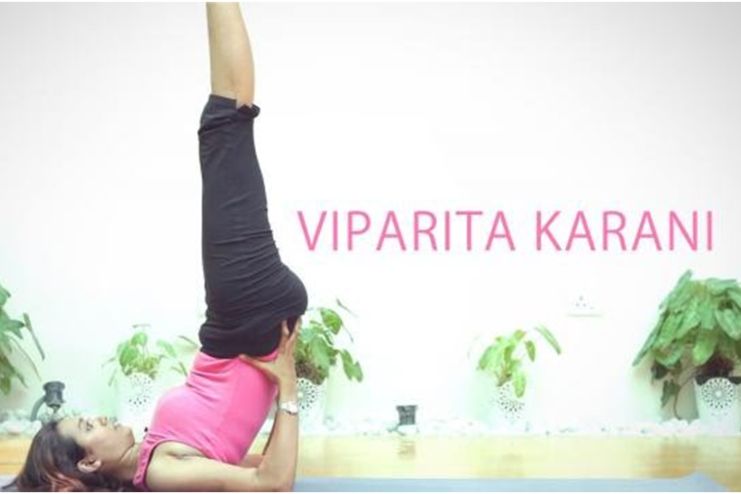
This asana is also known as the half-shoulder stand.
Steps:
- Lie on your back on a yoga mat
- Keep your legs straight and point your feet upwards
- Lift your hips into the air, supporting them with your hands behind your hips
- Focus your weight on your neck, elbows, and shoulders
- Keep your gaze directed upwards
- Bring your legs over your head and slowly bring your spine to the floor, returning to the starting position.
- Gently lower your legs to the floor and relax
Cautions:
- As with Sarvangasana, this asana should be avoided during menstruation and pregnancy
- If you have severe back or neck problems, seek help from a trained instructor before attempting this asana
3. Raised Leg Pose or Uttanpadasana
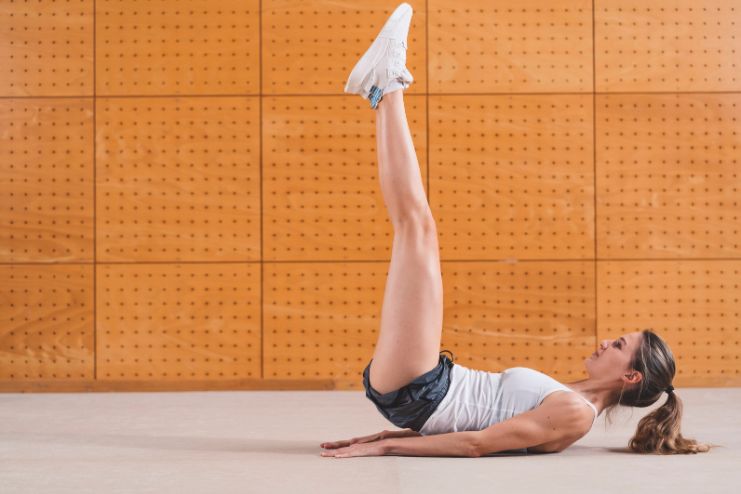
Uttanpadasana, also known as the raised foot pose, helps boost hemoglobin production.
Steps:
- Lie flat on your back on the mat
- Lift your legs into the air at a 90-degree angle to the floor. If this is difficult, you can lift them to a 60-degree angle
- Keep your legs stable, avoiding jerks or movements
- Ensure that your toes are together and pointing upwards
- Hold the position for a while, controlling your breath
- Slowly bring your legs back to the ground while breathing normally
- You can also try this pose with one leg at a time
Cautions:
- If you have high blood pressure or severe headaches, consult your doctor before performing this pose
- Pregnant and menstruating women should avoid this asana
These asanas help improve oxygen delivery to the blood throughout the body by stimulating the production of red blood cells and hemoglobin. In addition to asanas, several breathing exercises can further aid in hemoglobin production.
Breathing Exercises for Hemoglobin Production
1. Cooling Breath or Shitali Pranayama

Steps:
- Sit cross-legged on the floor with your palms on your knees
- Stick out your tongue and roll the sides of it to form a tube
- Inhale through this tube tube-like tongue
- After inhalation, close your mouth and exhale through your nostrils
- If you cannot roll your tongue, you can also do this by clenching your teeth
Cautions:
- If you suffer from low blood pressure, avoid this exercise
- Asthma or heart patients, who may experience discomfort while holding their breath, should be cautious
2. Alternate Nostril Breathing or Nadi Shodhan Pranayama
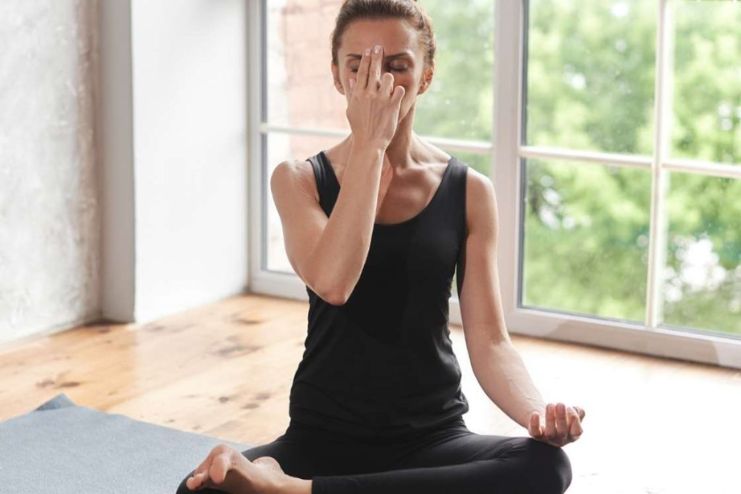
Steps:
- Sit on a mat with your spine erect and shoulders relaxed
- Place your left hand on your left knee, with your thumb and index finger gently touching each other and your palms open
- Place your right index finger between your eyebrows and ring and little fingers on your left nostril. Keep your right thumb on your right nostril
- Exhale through your left nostril, while gently pressing the right nostril with your thumb
- Inhale through the left nostril by removing the little and ring fingers
- Exhale through the right nostril by removing your thumb from it
Cautions:
- Keep the flow gentle and natural—don’t rush
- Do not apply too much pressure on your forehead with the fingers
- Ensure that your exhalation is longer than your inhalation
3. Skull Shining Breath or Kapalbhati Pranayama

Steps:
- Sit comfortably with your spine erect, keeping your palms on your knees
- Inhale deeply
- Exhale while pulling your stomach towards your spine
- Repeat as much as you can
- You can also place your right hand on your stomach for support
- Complete one round by taking 10-15 breaths
Cautions:
- Avoid this exercise if you suffer from backaches, have stents, or an artificial pacemaker
- People with hernias, epilepsy, or who have had abdominal surgeries should avoid this exercise
- Pregnant or menstruating women should avoid this exercise. It is also not recommended immediately after pregnancy
- Those with hypertension or heart problems should perform this exercise under expert supervision
Conclusion
Incorporating yoga into your daily routine can significantly improve hemoglobin production, helping maintain proper oxygenation. The practice of specific asanas like Shoulder Stand, Legs-up-the-wall pose, and Raised Leg pose, combined with breathing exercises such as Cooling Breath, Alternate Nostril breathing, and Skull Shining Breath, can boost red blood cell and hemoglobin production.
These techniques not only aid in increasing oxygen delivery throughout the body but also promote relaxation, improve circulation, and enhance overall well-being.
However, it is important to consult a healthcare professional before starting any new exercise routine, especially for individuals with pre-existing health conditions.
Regular practice, alongside a balanced diet, can lead to sustained energy levels, better blood flow, and overall vitality, making yoga a beneficial tool for increasing hemoglobin levels and improving overall health.
-
May 2017Written by Prajakt K
-
Dec 2024Edited by Lakshmi Gayatri
In this Article













